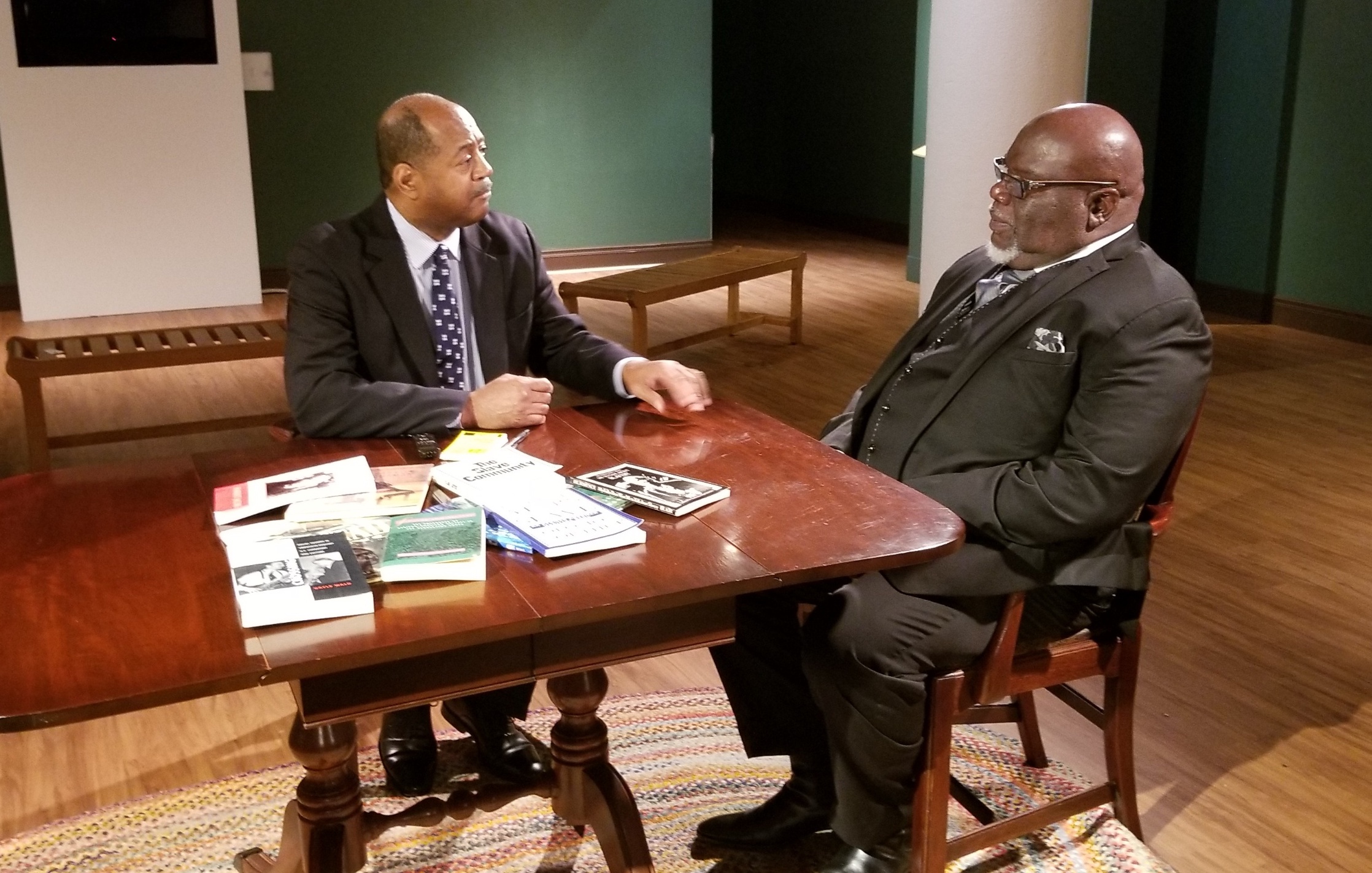Bishop T.D. Jakes Learns More About His Family History Via Exhibit
Bishop T.D. Jakes Learns More About His Family History Through Museum Exhibit
“If I reach back far enough I can touch my own family slavery in a very personal way.” – Bishop T.D. Jakes
DALLAS – Inside a provocative exhibit about Thomas Jefferson and slavery, Bishop T.D. Jakes was reminded of his own enslaved ancestors.
Jakes, who has visited Africa many times, proudly talked about his Nigerian roots. He said Dr. Henry Louis Gates, a professor of African and African American research at Harvard University, arranged a DNA test which confirmed that Jakes’ ancestors were from Nigeria.
“Going back there recently, I went into an area that was predominantly Ibo and it was kind of emotional to me,” Jakes said. “Because they made presentations to me — my house is decorated with a lot of African art — and they were telling me this is what your language sounds like.”

“And I think of how so many people look at Africa and they talk about poverty but when I looked at it I thought they are so rich in ways that we are poor.” Jakes said. “They know who they are, they know whose they are, they know where they came from, they proudly understand their languages, and in that way we are very poor and so there needs to be a greater exchange between us as people because for me it was like regaining a part of myself that was lost.”
Jakes is the honorary co-chair of a new traveling exhibit, “Slavery at Jefferson’s Monticello: Paradox of Liberty,” which will run from Sept. 22 to Dec. 31 at Dallas’ African American Museum.
The exhibition tells the story of slavery at Monticello, Jefferson’s 5000-acre plantation, from the perspective of Africans who Jefferson enslaved. More than 300 artifacts, works of art and documents representing Jefferson’s Monticello will be on display. Jefferson, the author of The Declaration of Independence and America’s third President, enslaved over 600 people.
Jakes said he has a vivid recollection of his great-grandmother who was once enslaved. He was just 10 years old but said he remembers listening to his great-grandmother talk about slavery and his family’s history.
The Bishop said he thought about his own family and the multitudes of other Black families that were separated by slavery.
“All of the people who got on the boat were not the same people but they had to unify in order to survive under stress.” Jakes said. “It’s an amazing story when you think about it. They didn’t even speak any other’s language so well that was a certain amount of distrust under the planks of the ship there was a huge enemy above and so in that sandwich dimension of history we survive nonetheless.”
“We learn how to communicate with each other,” Jakes said. “We learned how to become a people. We struggle with what to call ourselves – ‘darkies’ and ‘coloreds’ and ‘niggers’ and ‘Negroes’ and all of these names that were thrust upon us is a reflection of trying to identify who am I,” Jakes added.
Dallas is the first city to host the exhibit that will feature additional objects that have never left Monticello. Other stops for the exhibit include Detroit, Richmond and the West Coast in 2019.
Some of the artifacts that appear in the exhibit include, nails made at the nailery, which was run by the enslaved families an became an extremely profitable industry for Jefferson; a tombstone of Priscilla Hemmings that was hand-carved by her husband John Hemmings a gifted furniture maker and china and pottery purchased by the enslaved families at the market. ·
Some of Jefferson’s items on display include a finely carved chess set, his eyeglasses and bookstand. Also, a medicine bottle from Paris that may have been brought back by Sally Hemings during her time in France; a portion of a black pot (Jefferson encouraged his slaves to marry and gave them a black pot as a wedding gift) and an armchair used in the house that is believed to have been made by John Hemmings.
After Jakes completed a tour of the exhibit, he sat inside one of the museum’s upstairs galleries, glanced at a panel about enslaved African people, and spoke philosophically about slavery’s 300-year impact on the world.
“I think that no matter what the color of the people are,” Jakes said, “anytime we allow one group of people to have that much power, abuse perpetuates itself whether you are talking about some of the atrocities that have happened in the history of the Jews or whether you’re talking about the apartheid in South Africa, or whether you’re talking about slavery and Jim Crow in America.”
Follow The Willie Moore Jr. Show on Facebook, Twitter and Instagram!

















